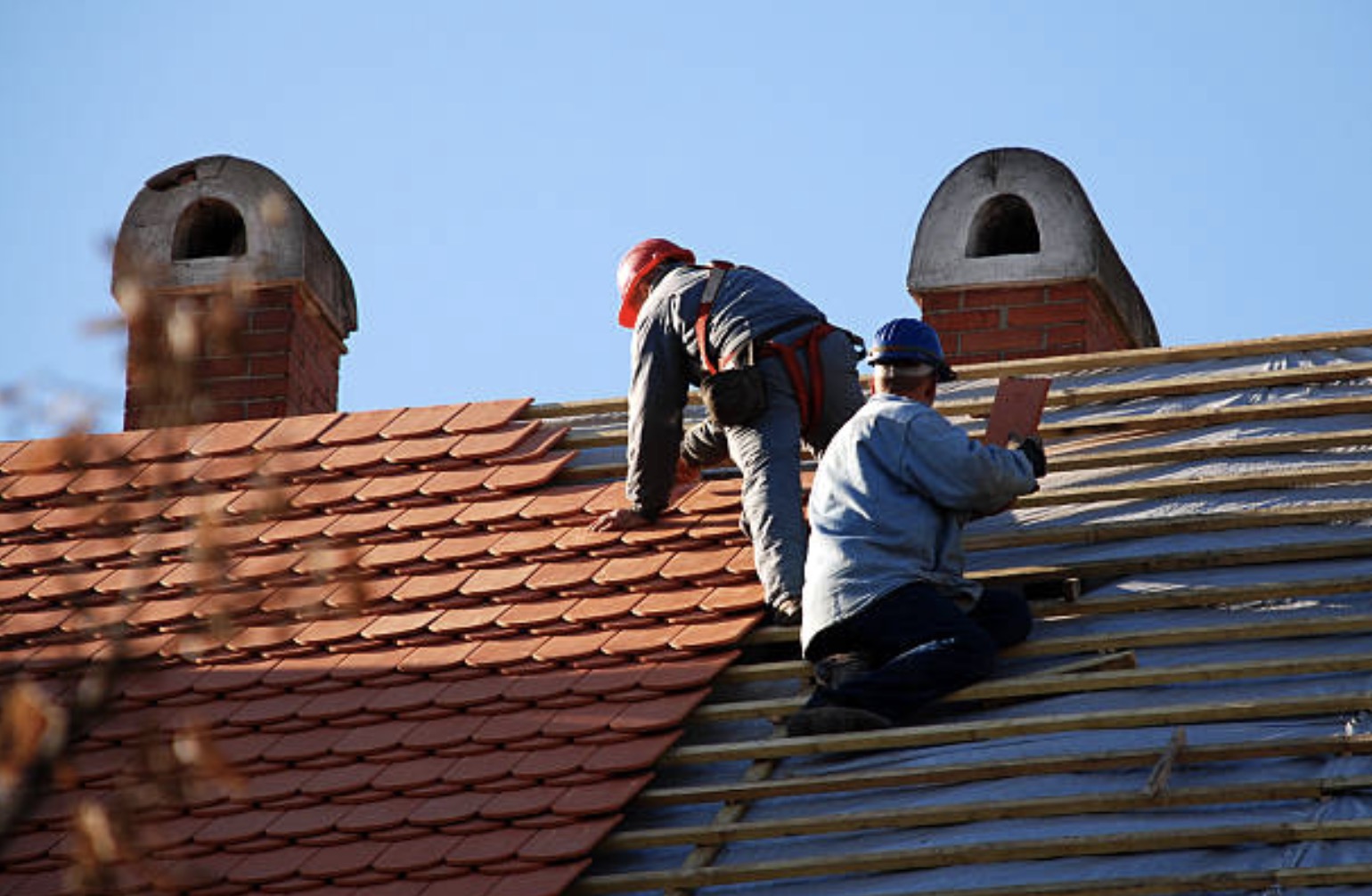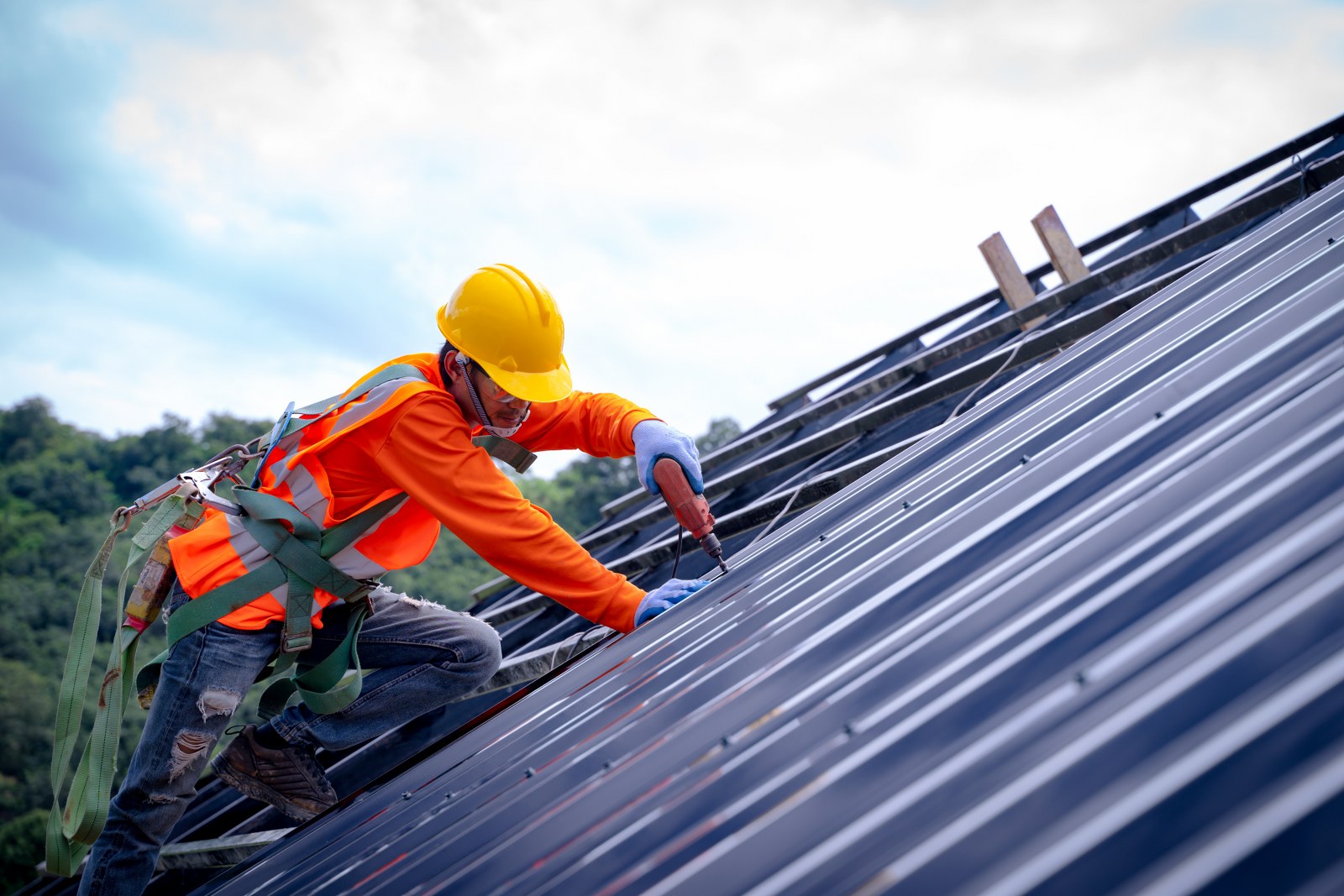The Ultimate List for Roofing System Install: Making Certain Top Quality and Durability
The procedure of setting up a roofing calls for mindful attention to detail. A complete list can assist ensure top quality and longevity throughout the job. From examining the existing roof covering problem to choosing the best materials, each step is essential. Correct prep work and tools play an important duty in accomplishing an effective setup. Many forget the relevance of final inspections and continuous upkeep. Comprehending these elements can substantially impact the durability of a new roof covering.
Evaluating Your Current Roofing Problem
Just how can one effectively determine the problem of their current roof covering? A comprehensive assessment is necessary for examining a roofing's integrity. House owners need to start by analyzing the roof covering from the ground, looking for visible indicators of wear such as missing roof shingles, sagging locations, or staining. Closer assessment can be done by accessing the roof itself, where one must check for broken or crinkled roof shingles and check blinking around vents and chimneys.Additionally, the interior of the home warrants interest; water discolorations or mold and mildew development on ceilings and wall surfaces might show leaks. Attic examinations can disclose possible concerns, such as poor air flow or indicators of moisture.Regular evaluations, ideally twice a year, can help identify problems early and protect against pricey repairs. By comprehending the roof covering's existing state, homeowners can make informed decisions about essential maintenance or replacements.
Selecting the Right Roof Materials
When selecting roof covering materials, what variables should homeowners take into consideration to ensure a durable and efficient choice? First, the environment plays a substantial duty; materials ought to endure local weather, whether it's hefty rain, snow, or intense sunlight. Next, the long life of the material is crucial; options like steel or slate deal expanded life expectancies compared to asphalt shingles. Home owners need to additionally assess the product's weight, as this can impact the architectural honesty of the home. Furthermore, aesthetics matter; the chosen product must complement the total architectural style. Power efficiency is an additional consideration; some products reflect warmth, decreasing air conditioning costs. Finally, budget plan constraints will determine selections; while some materials may have a lower ahead of time cost, long-lasting durability can cause greater financial savings. By weighing these elements, home owners can make informed decisions that improve their roof covering's high quality and long life.
Preparing for Installment
Before the installation procedure begins, homeowners need to assure that their building is appropriately prepared to accommodate the new roofing. This prep work involves numerous essential steps to guarantee a smooth and reliable setup. First, house owners ought to get rid of the location around your home of any type of particles, tools, or furniture that can hinder access for service providers. In addition, it is important to inform next-door neighbors concerning the approaching work to minimize disruption and safe and secure cooperation.Next, homeowners should inspect their existing roof and structural elements, attending to any kind of possible concerns such as rotting wood or leakages that can influence the installment. Safeguarding needed licenses and sticking to regional building codes is crucial for conformity and safety and security. Lastly, scheduling the installation during desirable climate condition helps prevent hold-ups and assurances that the work profits without difficulties. Correct preparation establishes the foundation for an effective roof project, ultimately improving the longevity and performance of the new roof.

Necessary Tools and Devices
In roofing system installment, having the right tools and devices is vital for an effective job. This consists of essential safety gear, various roofing setup tools, and efficient product taking care of tools. Correct prep work and option of these things can significantly boost efficiency and security on the task site.
Security Equipment Requirements
Security equipment is an important part of any kind of roof installment task, making certain the well-being of workers at raised elevations. Crucial safety and security tools consists of hard hats, which safeguard against dropping debris, and safety goggles to secure the eyes from dust and particles. Non-slip shoes is considerable for preserving grip on high surfaces, while harnesses and lanyards provide loss security, stopping severe injuries. Gloves aid safeguard hands from sharp products and lower tiredness during extended durations of work. Additionally, high-visibility vests boost visibility, advertising understanding among group members and neighboring employees. The use of ear security may likewise be recommended in loud environments. Generally, sticking to security gear demands is essential for a safe and efficient roof covering installment process.

Roof Setup Devices
Appropriate precaution prepared for an effective roof covering task, yet having the right devices and devices is just as essential. Necessary tools for roofing setup include a ladder, enabling secure accessibility to the roof, and a roofing nail weapon to assure effective and protected fastening of products. A chalk line is essential for noting straight lines, while an utility blade is essential for reducing roof covering products precisely. Additionally, a pry bar help in getting rid of old tiles. Employees should additionally have a degree to confirm proper alignment and drainage. Ultimately, a great set of job handwear covers safeguards hands while giving grasp. Together, these devices assist in a smooth roofing procedure, enhancing both top quality and longevity.
Product Handling Equipment

A variety of product handling equipment is essential for an effective roofing setup process. Devices such as forklifts, lifts, and dollies assist in the movement of heavy products like tiles and underlayment to the task website and onto the roofing system. Using scaffolding and ladders warranties risk-free accessibility to raised areas while decreasing the danger of injury. Tarpaulins and bins are essential for proper storage space and organization of products, stopping damage and guaranteeing easy access. Furthermore, a crane might be needed for larger roof tasks to lift considerable products straight onto the roofing. Proper training being used this equipment is crucial; it enhances process performance and contributes to overall job safety and security, assuring a successful roof covering installation.
Step-by-Step Installation Process
The step-by-step setup procedure is essential for a successful roofing installment. It starts with preparing the roof surface, followed by the proper installation of underlayment, and concludes with the effective protecting of roofing products. Each of these actions plays a vital duty in guaranteeing the resilience and performance of the roof.
Prepare the Roofing System Surface
Preparing the roof covering surface is important for making sure an effective setup of roof materials. This process starts with a comprehensive evaluation to determine any type of existing damage or particles. Any kind of loosened tiles, sticking out nails, or old roof products must be removed to develop a tidy, smooth structure. Next off, the roof covering deck need to be checked for rot or architectural issues, as these can endanger the honesty of the new roof. After repairs, an extensive cleansing is needed; this includes sweeping away dirt, leaves, and any various other impurities that could prevent bond. Making certain appropriate drainage and air flow is important, as these factors affect the durability of the roofing system. A well-prepared surface establishes the stage for ideal installation and resilience.
Mount Underlayment Effectively
Mounting underlayment appropriately is fundamental for boosting the general efficiency of the roof. The process starts with choosing the appropriate underlayment material, which can include felt, synthetic, or rubberized choices. Next off, verify the roof covering surface is tidy and dry prior to laying the underlayment - roofing company honolulu. Begin at the cheapest factor of the roofing system, turning out the underlayment flat and overlapping each row by at least 6 inches. It is necessary to protect the underlayment in place with staples or roof nails, avoiding website gaps or creases that can jeopardize water resistance. Ultimately, trim excess material at the edges, assuring a cool surface. This thorough installation action is crucial for supplying an added layer of security against dampness and improving longevity
Protect Roofing Products Successfully
After validating the underlayment is effectively installed, the following action entails securing the roof covering products efficiently. The roofing contractor should collect all required materials, consisting of tiles, nails, and blinking. Starting at the most affordable point of the roofing system, tiles need to be stocked a staggered pattern, validating appropriate overlap to avoid leaks. Each shingle must be fastened with nails, making use of the producer's recommended spacing and amount. It is important to drive nails straight, staying clear of over-penetration, which can endanger the material. Blinking should be installed around smokeshafts and vents to boost waterproofing. The contractor must carry out a comprehensive examination to verify all materials are safely fastened, as this will considerably impact the roofing system's total longevity and durability.
Performing Last Examinations
Complete final assessments are important to ensure that a recently set up roofing system meets all safety and quality requirements. This vital step involves evaluating the entire roof for any type of possible issues that might arise post-installation. Inspectors need to examine the positioning of tiles, making sure they are correctly secured and without problems. Blinking and air flow systems need to additionally be evaluated for right setup and functionality.Additionally, the examiner should check gutters and downspouts to validate they are suitably positioned to assist in water drainage. Any kind of signs of leaks, misaligned materials, or insufficient securing around penetrations ought to be resolved immediately. Roofers should additionally make certain that all particles from the installation process is removed, leaving the website clean and safe. Performing these detailed inspections helps prevent future complications, eventually prolonging the lifespan of the roofing and providing property owners with comfort regarding their financial investment.
Maintaining Your New Roof
Proper upkeep is crucial for guaranteeing the durability and efficiency of a new roofing. Property owners need to conduct routine inspections at the very least twice a year, preferably in spring and fall, to determine prospective issues early. Throughout these examinations, they need to try to find indications of damages, such as missing shingles, leaks, or particles build-up, which can hinder drain and advertise mold and mildew growth.Cleaning gutters and downspouts is crucial, as blocked systems can cause water damages and architectural issues. Furthermore, cutting overhanging branches can stop abrasion and particles accumulation on the roof covering surface.It's additionally advisable to schedule expert inspections every few years to examine the roof's problem extensively. Keeping documents of upkeep activities and repair services can aid track the roof covering's efficiency in time (commercial roofing honolulu). By sticking to a consistent maintenance routine, property owners can safeguard their investment and ensure their brand-new roofing continues to be efficient for many years ahead
Regularly Asked Questions
The length of time Does a Typical Roof Installation Take?
The duration of a typical roofing setup differs based on factors such as roof covering dimension, products, and climate condition. Normally, it can take anywhere from someday to numerous weeks to complete the installment.
Can I Install a New Roofing Over an Existing One?
The inquiry of mounting a brand-new roof covering over an existing one often emerges. Lots of property owners consider this choice for cost-effectiveness, however it is vital to assess neighborhood structure codes and the architectural stability of the existing roof.
What Permits Are Required for Roof Setup?
Prior to mounting a roofing system, one have to inspect neighborhood guidelines. Generally, structure licenses are called for, together with examinations to ensure conformity with safety criteria and zoning laws. Consulting with neighborhood authorities is important for correct assistance.
What Service warranties Are Offered for Roofing Materials?
Numerous warranties exist for roof products, typically including supplier warranties covering flaws and performance. Additionally, some professionals use workmanship warranties, making sure installment quality. Purchasers need to thoroughly assess terms to recognize insurance coverage duration and restrictions.
Exactly How Can Weather Impact the Setup Refine?
Weather condition substantially influences the installation procedure, as rain, snow, or severe temperature levels can delay work, affect material bond, and concession safety and security. Correct preparation and organizing around weather report are important for successful roof covering installation.